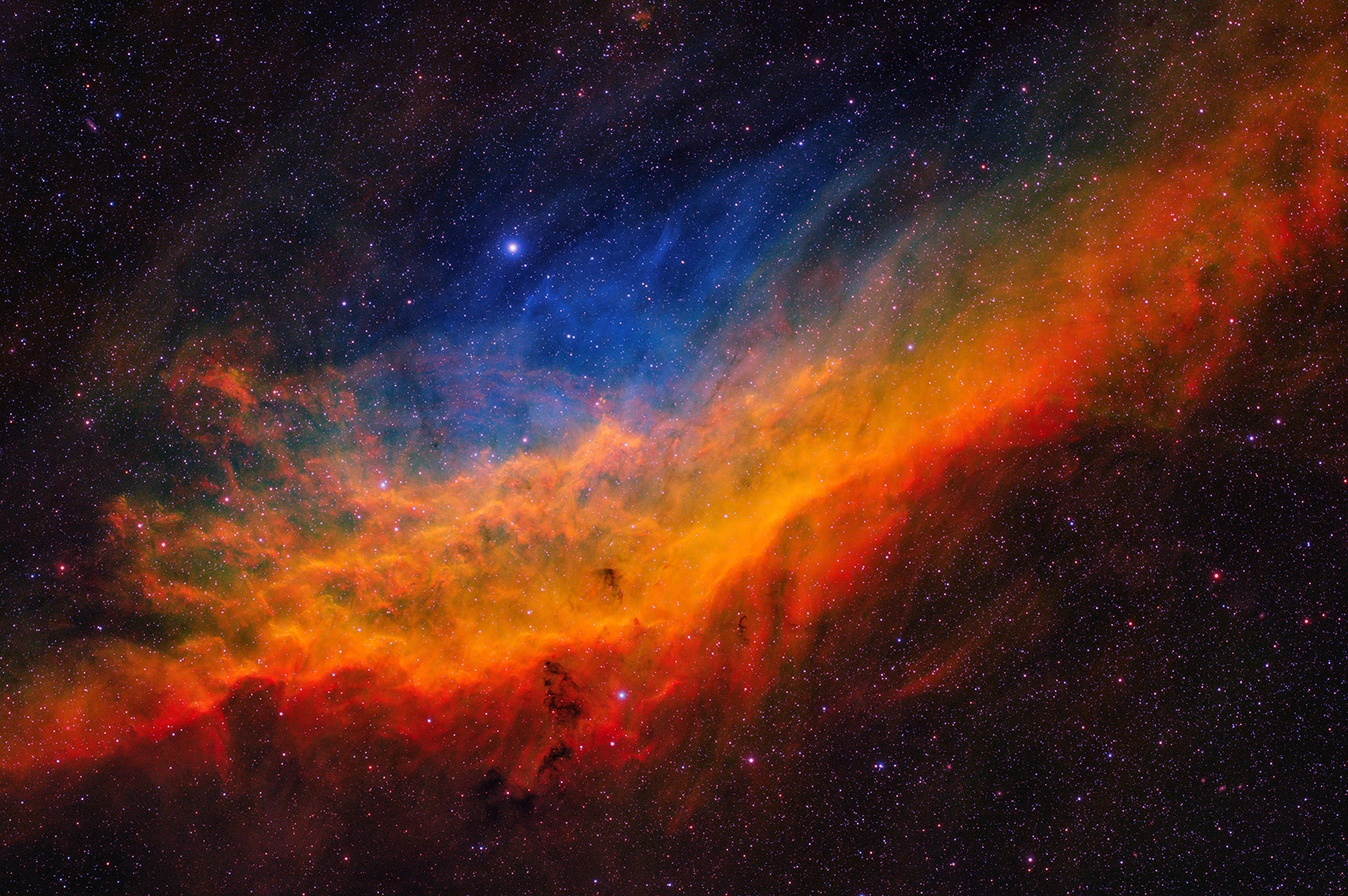
The California Nebula in Elemental Colors |
|||||||||||||||||||||
About This PhotographAbout 1,200 light years from Earth in the constellation of Perseus lies a roughly 100 light-year long swath of ionized gasses known as the California Nebula, so named for its resemblance to the outline of the US state. The sole source of nearly all of the ultraviolet light needed to excite this gas to fluorescence is the bright star just to the upper-left of center. Known as Menkib or Xi Persei, it is a blue giant weighing in at roughly 30 times the mass of our sun, and glowing nearly 13,000 times brighter. With a surface temperature of 35,000 Kelvin (62,500°F), it is one of the hottest stars visible to the naked eye. Any hapless planets orbiting Menkib, if any formed at all in the intense stellar wind and radiation pressure, have surely been fried to a crisp. The nebula is composed of a mixture of gasses, three of which are shown here. Special filters isolate light from sulfur, hydrogen, and oxygen, and these are mapped to red, green, and blue to highlight the differences between them. | |||||||||||||||||||||
|
|||||||||||||||||||||
